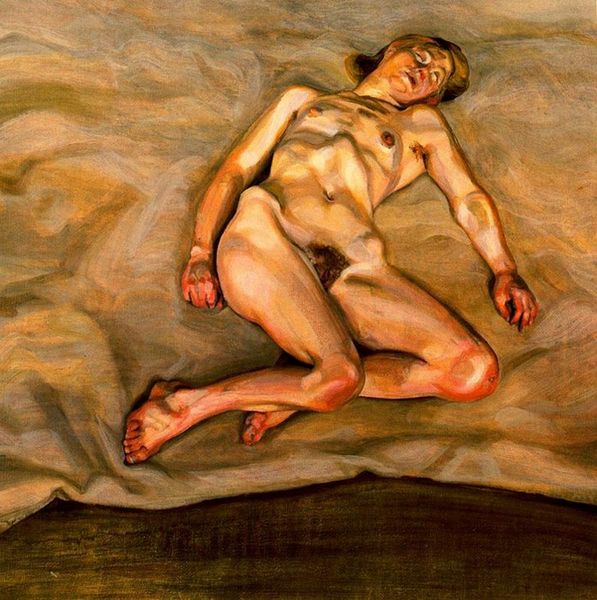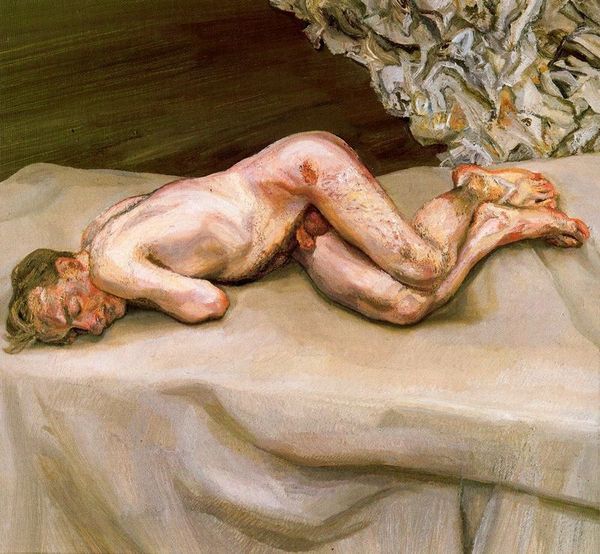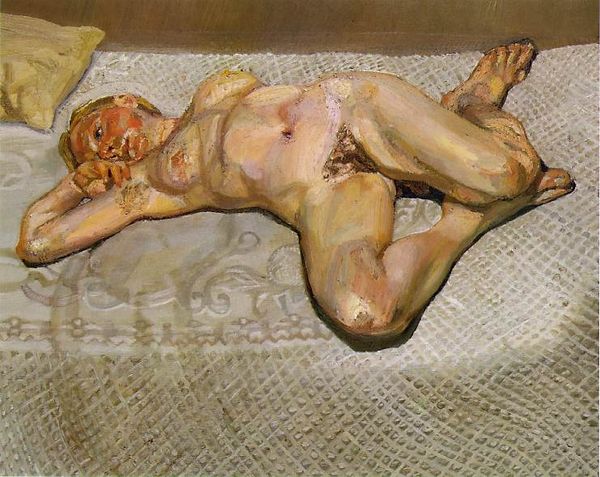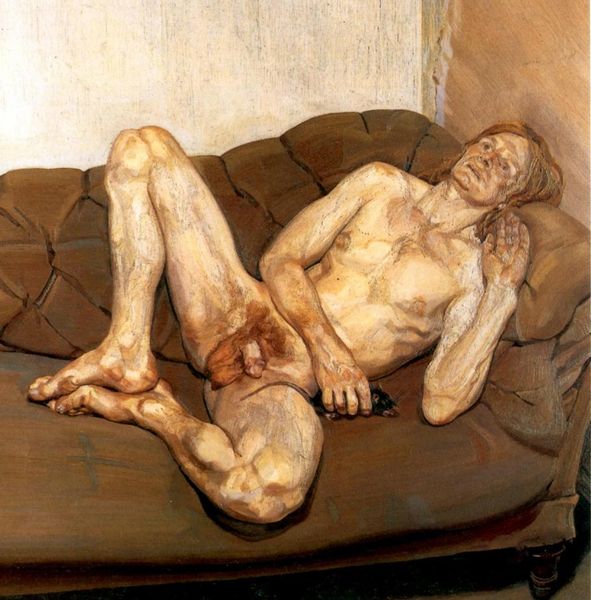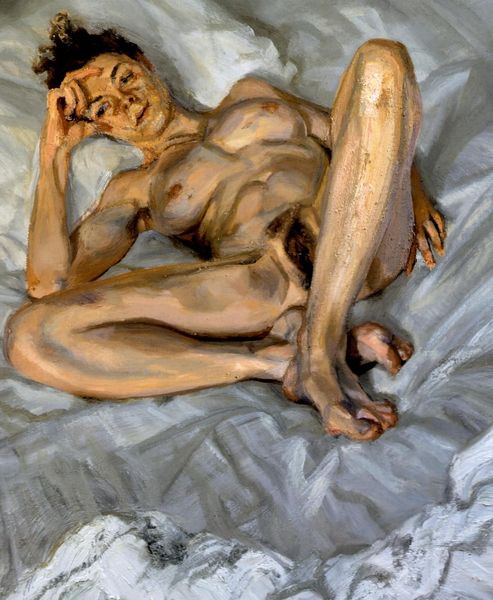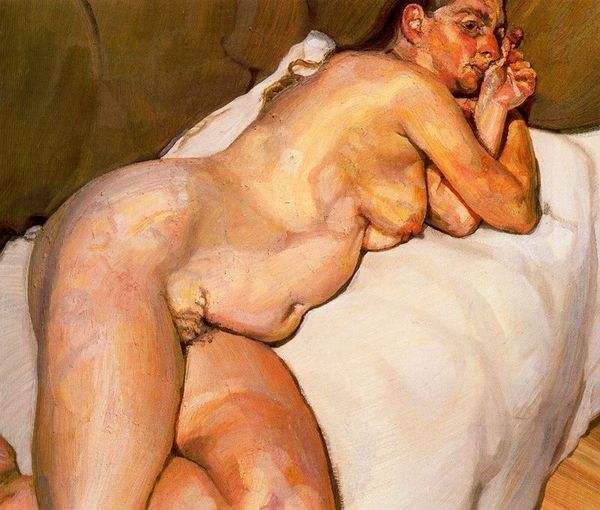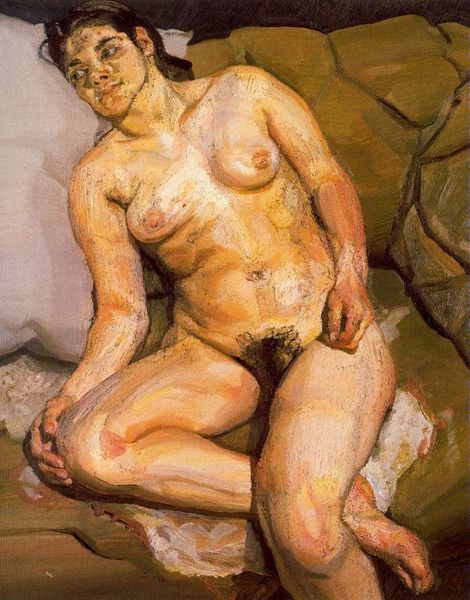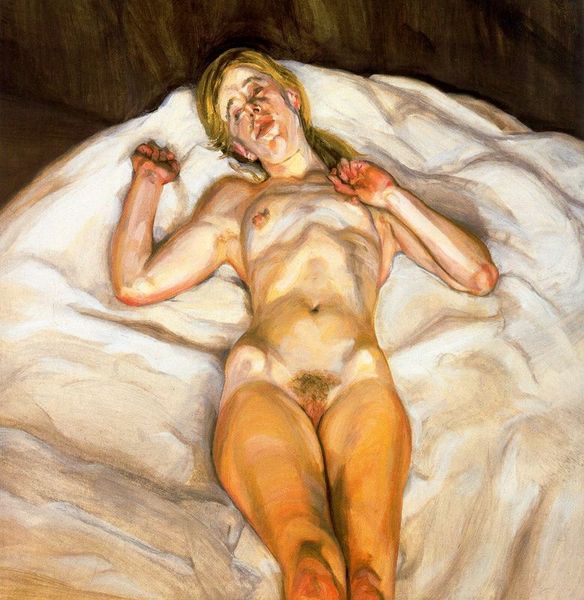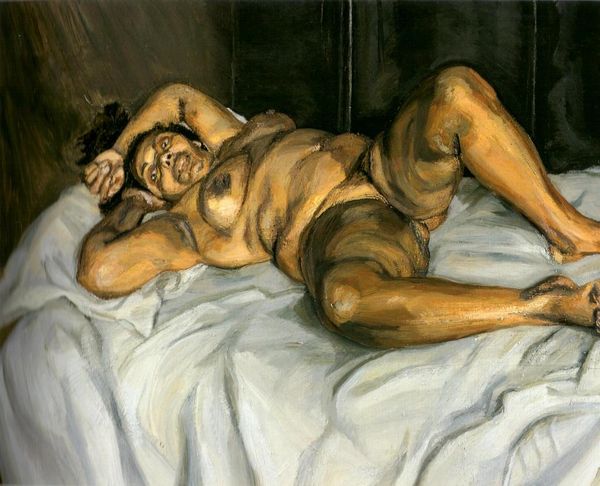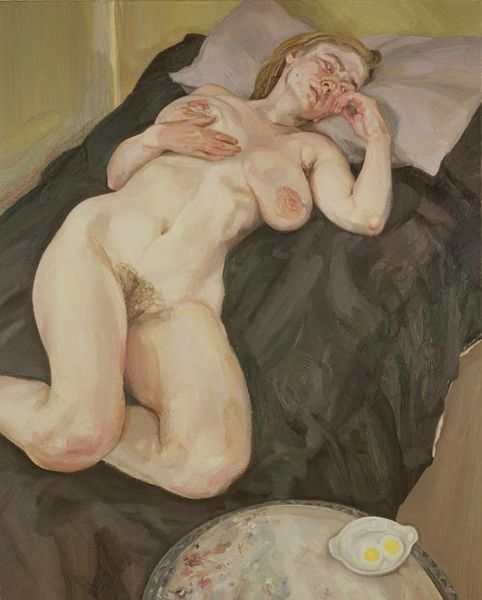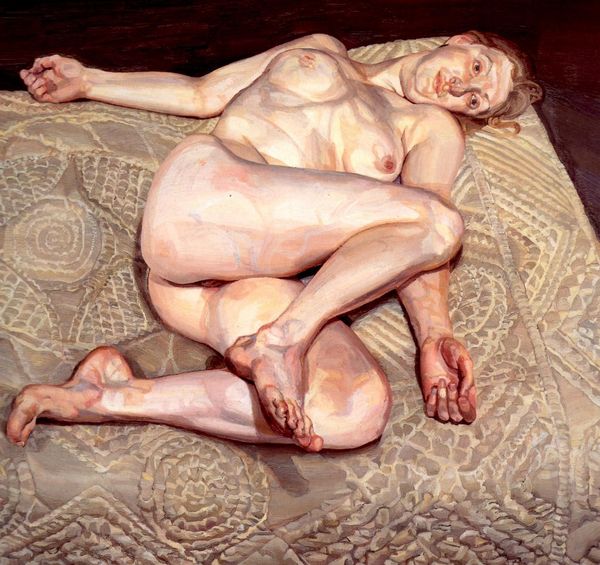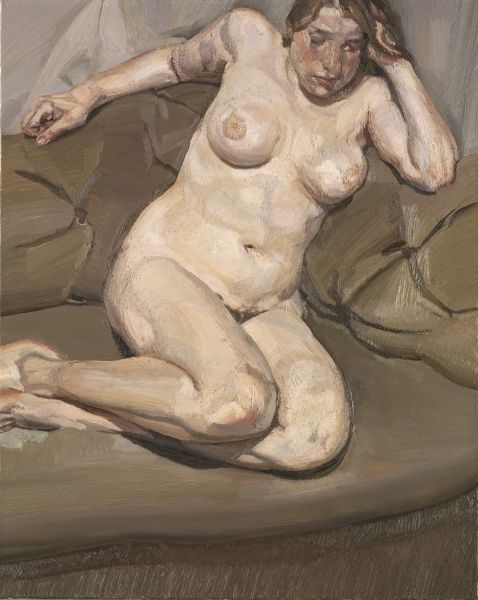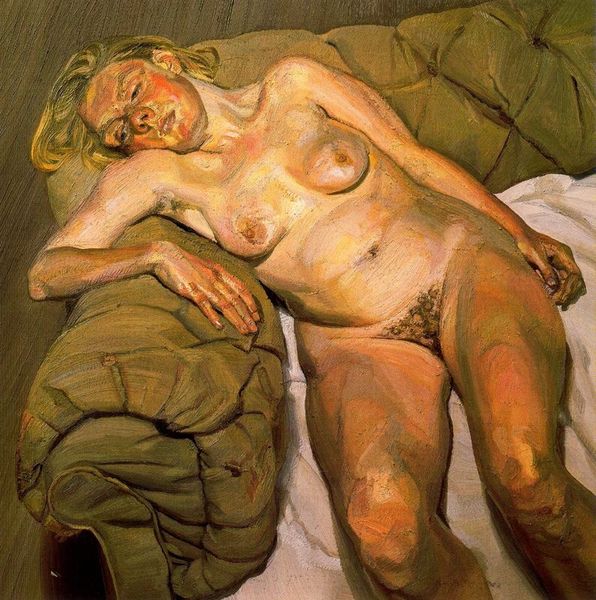
painting, oil-paint
#
portrait
#
painting
#
oil-paint
#
figuration
#
oil painting
#
female-nude
#
nude
#
realism
Dimensions: 55.8 x 55.8 cm
Copyright: Lucian Freud,Fair Use
Curator: Today, we’re looking at Lucian Freud’s oil painting, "Naked Girl Asleep II," completed in 1968. It's currently held in a private collection. Editor: My first thought is… earthiness. That olive-drab background and the figure’s pale skin create a sense of rawness, of exposed vulnerability. There's something very unglamorous about this representation. Curator: Precisely. The female nude has long been a charged symbolic form. But here, rather than idealization, we see a direct gaze at reality. Her sleep seems heavy, burdened even. Editor: I am really struck by the weight of the paint itself. You can practically feel the artist wrestling with the medium, building up layers to depict the subject's physical presence. Look at the knuckles, for example, they are heavily textured and almost aggressive in their realism. What kind of social forces are being addressed when a figure, so often consumed visually, is crafted so unflatteringly by this level of labor and raw materials? Curator: It's also important to note how Freud positions the sleeping figure. Consider the hand clenched in a fist above her head; it introduces a tension, hinting at a potential for struggle even within sleep, like a subconscious defense. Editor: Absolutely, and let's consider what’s missing. Any sign of opulent draping is totally absent. The material context – that bed or simple cloth – almost fades into the background, making the woman the sole object, but refusing to turn her into an ideal. The focus is unflinchingly on the physical. Curator: Indeed, there is no narrative. There are many ways that nudes can tell a story from mythology or morality tales. Here the emphasis is on form, pushing back against classical allegories. This directness forces the viewer to confront their own gaze and assumptions about beauty and vulnerability. Editor: So in confronting the medium in such a visible, worked-over manner, do you read the act of painting as a kind of social commentary about consumption of the body as a resource or commodity? I think about Freud's own social positioning when considering this. Curator: Perhaps. I see the humanity first and foremost, the psychological complexity laid bare. Acknowledging this challenges us to look beyond conventional symbolism to appreciate the very human condition on display. Editor: I agree, even though its creation has embedded within it so much of the economy that allows for art production. We each brought our different perspectives and still wound up admiring a work of challenging simplicity.
Comments
No comments
Be the first to comment and join the conversation on the ultimate creative platform.
